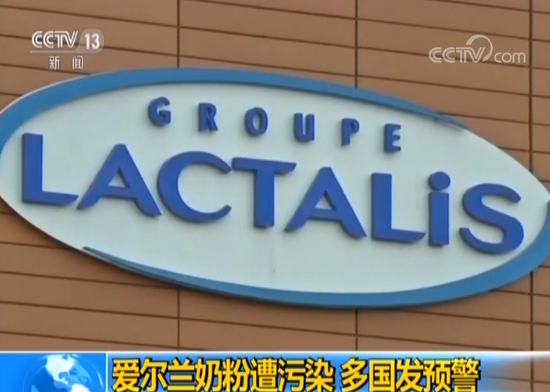Part Four: THE APPLICATION OF THE YIN-YANG THEORY
|
文章导读: |
The yin-yang theory permeates all aspects of the theoretical system of TCM. The theory is used to explain the organic structure, physiological function and pathological changes of the human body. It also serves as a principle to guide clinical diagnosis
阴阳理论渗透于中医理论系统的各个方面。该理论可用于解释人体的组织结构、生理功能和病理改变,也是指导临床诊断的原则之一。
l . Explaining the Tissues and Structure of the Human Body 1.解释人体组织结构
The human body is an integrated whole. All its tissues and structures are organically connected and may be classified as two opposite aspects-yin and yang. That is why Su wen states,"Man, having a form, can not deviate from yin and yang." In terms of the anatomical locations, the upper part of the body is yang and the lower part is yin; the exterior is yang and the interior, yin; the back is yang and the abdomen, yin; the lateral aspects of the extremities are yang and the medical aspects, yin. Concerning the zang-fu organs, the zang-organs store but not discharge essence-qi and, therefore, they are yin; while the fu-organs transmit and transform food into essence-qi but not store it, and, for this reason, they are yang. Furthermore, each of the zang- or fu-organs can be redivided into yin and yang. For example, heart-yin and heart-yang, kidney-yin and kidney-yang, stomach-yin and stomach-yang, etc. As concerns yin and yang of the meridian-collateral system, there are two categories: yin meridians and yang meridians; yin collaterals and yang collaterals. All of them are opposite pairs. Thus, in line with the yin-yang theory, the unity of opposites between yin and yang exist in the upper and lower, internal and external, front and back parts of the human body, and within all the internal organs as well.
人体是一个完整的整体。所有的组织结构都存在着有机联系,并可被分为阴阳相反的两类。这就是为什么《素问》说:人生有形,不离阴阳。就解剖位置而言,人体上部为阳,下部为阴;外为阳,内为阴;背为阳,腹为阴;四肢末端为阳,躯干为阴。就脏腑组织而言,脏藏而不泄,故为阴;而腑泄而不藏,故为阳。再者,脏腑的每一部分又可分阴阳。例如,心阴和心阳,肾阴和肾阳,胃阴和胃阳等等。就经络系统之阴阳而言,可分为两类:阴经和阳经,阴络和阳络。以上都属于阴阳的对立两面。以此而知,阴阳理论贯穿存在于人体的上下、内外、前后部分和内部组织之间。
2. Explaining the Physiological Functions of the Human Body 2.解释人体的生理功能
The yin-yang theory believes that the normal life activities of the human body result from the harmonious relation of the unity of opposites between yin and yang. Take the relationship between function and matter for example, function pertains to yang while matter, to yin. Physiological activities of the body are based on matter. Without matter, there would be no sustentation for function activities. And functional activities are the motive power for producing matter. In other words, without functional activities, the metabolism of matter would not be performed. In this way, yin and yang within the human body depend on each other for existence. If yin and yang can't complement each other and become separated from each other, life will come to an end. So Su Wen says:"The equilibrium of yin and yang makes the vitality well-conserved; the divorce of yin and yang essence-qi exhausted."
阴阳理论认为人体的正常生命活动来自于阴阳对立统一关系的协调。以功能和物质的关系为例,功能属阳,物质属阴。人体的生理活动以物质为基础。没有物质,功能活动就无法维持。功能活动是物质形成的动力。换言之,没有功能活动,物质形态就无法形成。因此,人体阴阳是相互依存的。如果阴阳不能相互补充而是相互分离,生命就将告终。故《素问》曰:阴平阳秘,精神乃治;阴阳离决,精气乃绝。www.tcmer.com收集整理
3. Explaining the Pathological Changes 3.解释病理改变
TCM considers that the imbalance between yin and yang is one of the basic pathogenesis of a disease. The occurrence and development of a disease are related to both the vital-qi and pathogenic factors. Although the pathologlical changes which occur in diseases are complicated and changeable, they can still be summarized as excess or deficiency of yin or yang. To be more concrete, "yang excess leads to heat syndrome while yin excess causes cold syndrome"; "yang deficiency results in cold syndrome while yin deficiency causes heat syndromes"; "yang deficiency affects yin while yin deficiency affects yang."
中医认为阴阳不调是疾病的基本病理改变之一。疾病的发生和发展与正邪两方面因素有关。尽管疾病的病理改变变幻复杂,但始终能归结为阴阳的虚实。更具体的说就是“阳盛则热,阴盛则寒;阳虚则寒,阴虚则热;阳损及阴,阴损及阳”。
4. Serving as the Guide to Diagnosis and Treatment 4.指导诊断与治疗
As the imbalance between yin and yang is the root cause for the occurrence and development of a disease, all clinical manifestations, no matter how complicated and changeable they are, can be explained with the aid of yin-yang theory. So TCM holds, "A skilled diagnostician, first of all, differentiates between yin and yang when observing the complexion and feeling the pulse." In differentiating syndromes, although there are the eight principal syndromes, namely, yin, yang, interior, exterior, cold, heat, deficiency and excess. Yin and yang are regarded as the general principles among the eight ones. According to the yin-yang theory, exterior, heat and excess pertain to yang; while interior, cold and deficiency pertain to yin. When treating a disease, TCM first determines the therapeutic principles, and then preponderance of yang belongs to excess-heat syndrome. It should be treated with cold-natured drugs in order to inhibit excessive yang, i.e, to cool the heat. Cold syndrome caused by preponderance of yin belongs to cold-excess syndrome. It should be treated with hot-natured drugs so as to restrain excessive yin, i.e., to heat the cold. As both syndromes above are excess syndromes, this therapeutic principle is called "treating excess syndromes with the purgation". Deficiency-cold syndrome caused by yang deficiency, should be treated with the drugs warm and tonic in nature to relieve excessive yin. This is said in TCM, "restraining predominant yin by reinforcing yang," also known as "treating yang for yin diseases." The interior heat syndrome resulting from yin deficiency belongs to Deficiency-heat syndrome, which should be treated with the drugs of nourishing yin and replenishing fluids so as to restrict excessive yang, this is what is known in TCM, "restraining predominant yang by strengthening (renal肾) yin," also called "treating yin for yang diseases."www.tcmer.com收集整理
由于阴阳不调是疾病发生和发展的根源,所有的临床症状,无论其有多么变幻复杂,都能用阴阳理论加以解释。所以中医认为“善医者,必先察色按脉,以别阴阳”。在辨证中,虽然有八纲即阴阳、表里、寒热、虚实,但总以阴阳为总纲。根据阴阳理论,表、热、实属于阳,里、寒、虚属于阴。中医治疗疾病时首先确定治疗原则。阳盛则产生实热证,应投以寒性药以抑亢阳,如热者寒之。阴盛导致的寒证属于实寒证,应投以热性药,以化实阴,如寒者热之。以上的证候属于实证,治疗原则为“实者泄之”。阳虚导致的虚寒证应投以温补之药以化实阴。这在中医称为“益火之源,以消阴翳”,亦为“阴病治阳”。阴虚引起的内热证属于虚热证,应投以滋补阴液之药以抑亢阳,这就是中医所说的“壮水之主,以制阳光”,亦称为“阳病治阴”。
|
|























